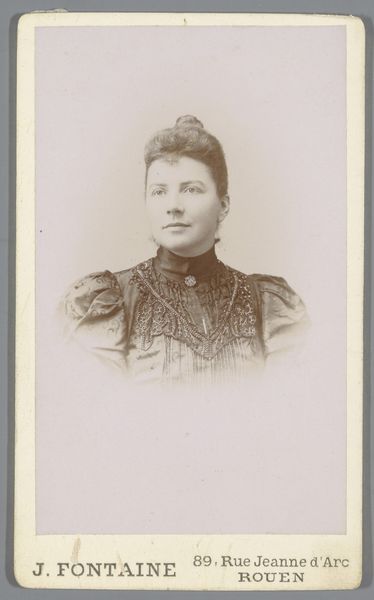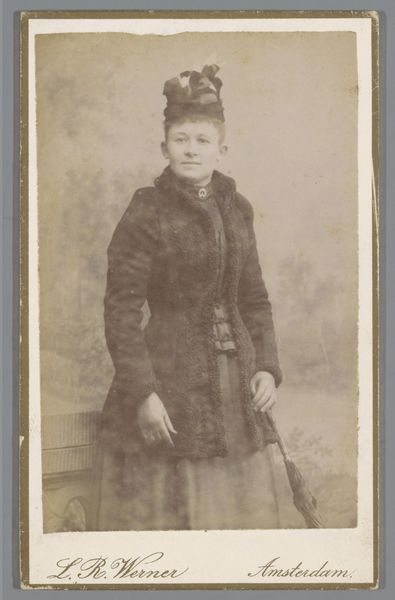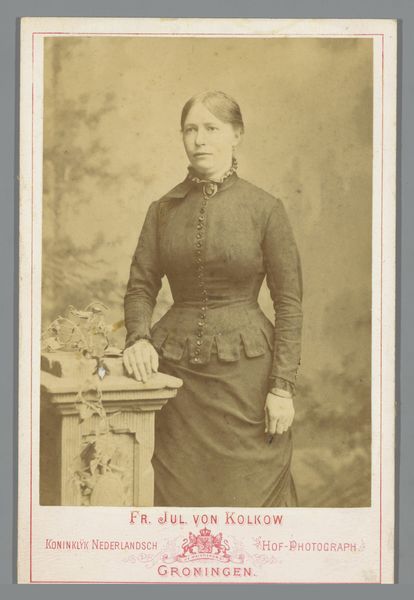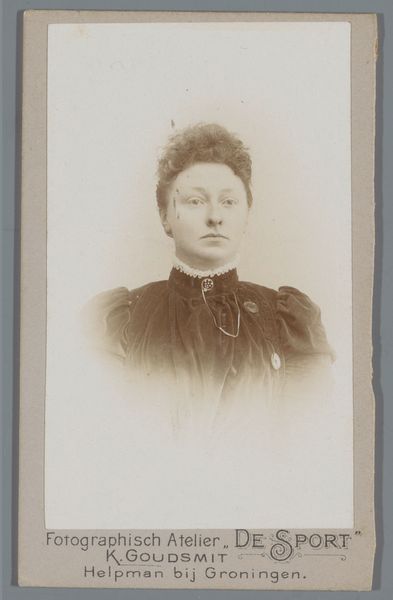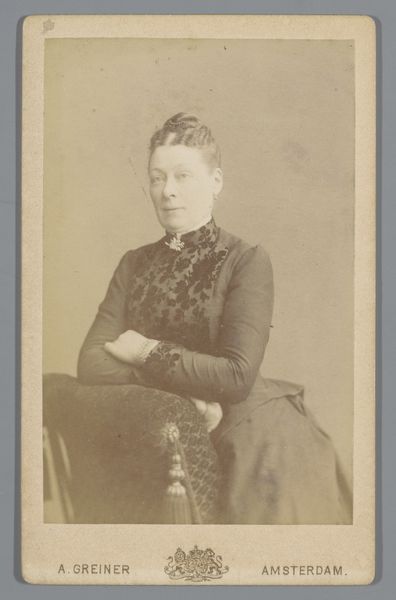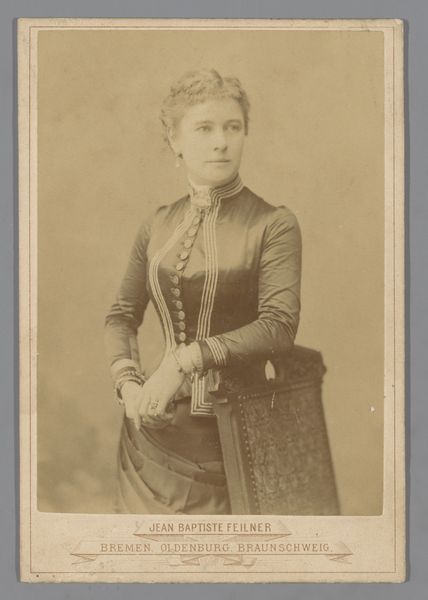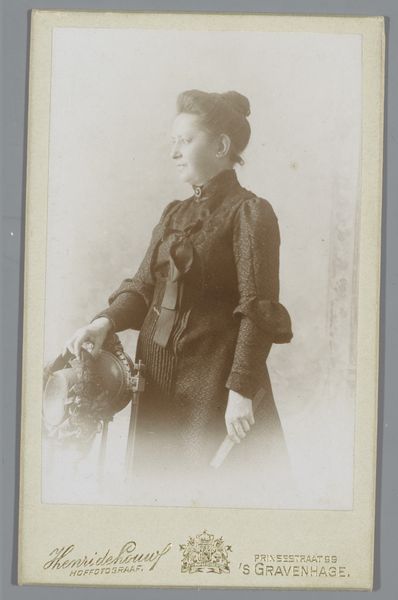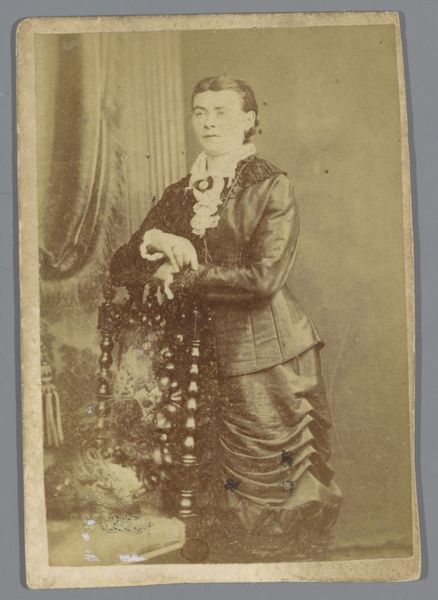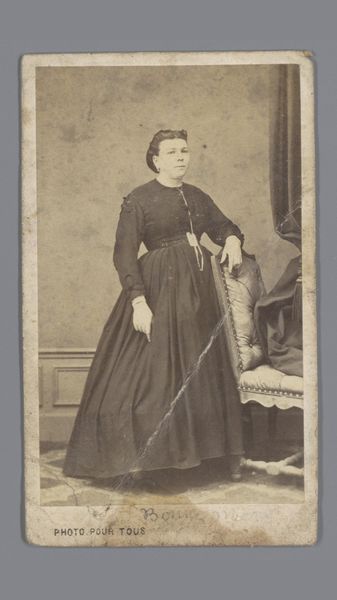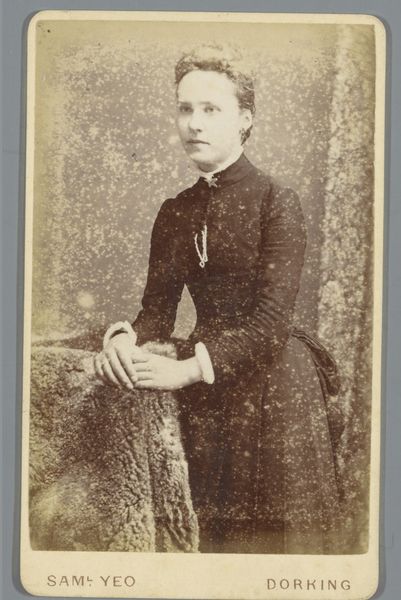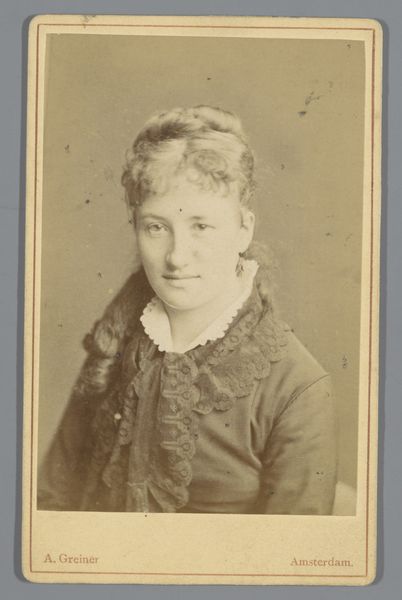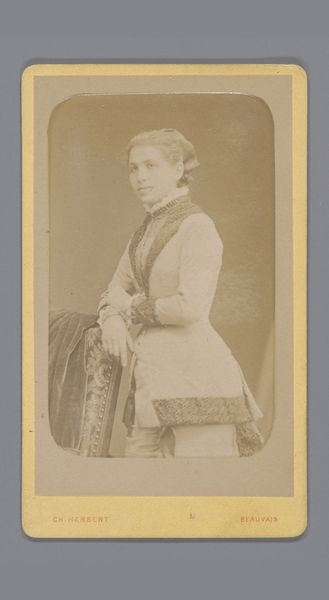
photography, gelatin-silver-print
#
photography
#
historical photography
#
gelatin-silver-print
#
19th century
Dimensions: height 133 mm, width 96 mm
Copyright: Rijks Museum: Open Domain
This is a photograph, "Portret van een vrouw," by Leonard C. Rudd. As a photographic print, this object’s material qualities stem from a chemically-induced process. Light-sensitive paper was carefully prepared, exposed to light through a negative, and then developed in a darkroom. Each stage demanded precision and skill. The final sepia tone wasn’t just aesthetic; it was a product of the chemical process itself, which imbues the image with warmth and age. The way the light catches on the surface, revealing the texture of the paper, is a reminder of the material reality of the image, challenging the idea of photography as a purely transparent medium. Consider, too, that while photography democratized portraiture, making it accessible to a wider public than ever before, there was still labor involved in the studios. Every stage from posing the sitter, developing and printing the photograph, and finally the hand retouching, meant this image embodies social and economic relationships. Paying attention to the materials and processes through which it was created opens up new avenues for understanding its cultural significance.
Comments
No comments
Be the first to comment and join the conversation on the ultimate creative platform.
